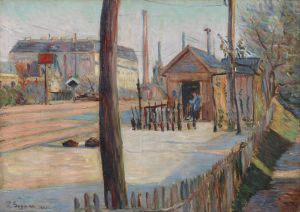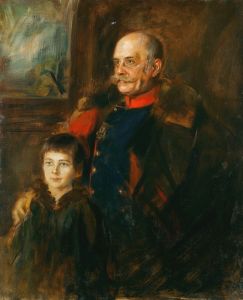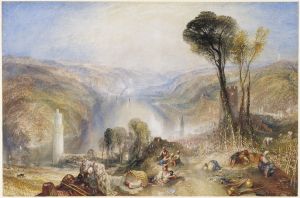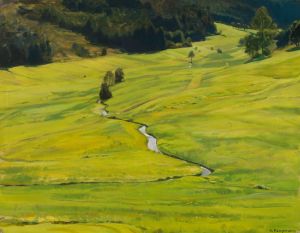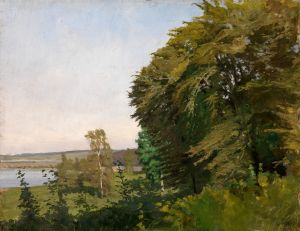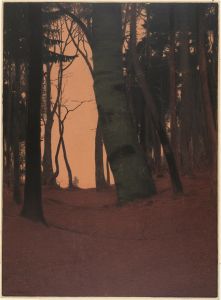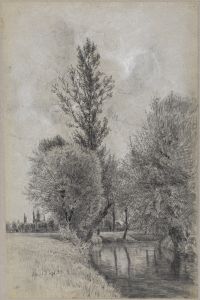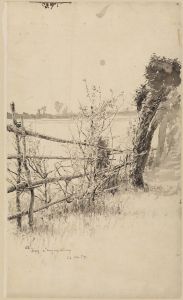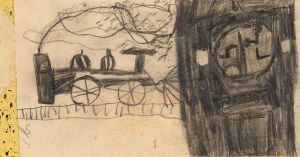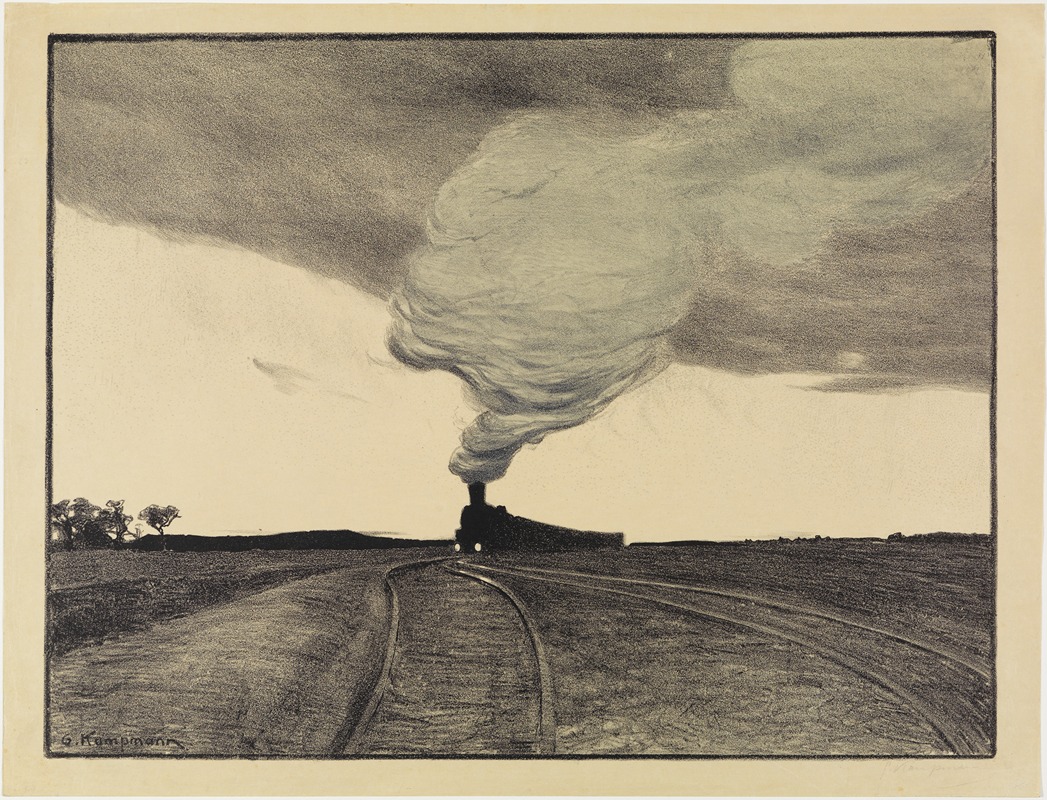
Eisenbahn am Abend
A hand-painted replica of Gustav Kampmann’s masterpiece Eisenbahn am Abend, meticulously crafted by professional artists to capture the true essence of the original. Each piece is created with museum-quality canvas and rare mineral pigments, carefully painted by experienced artists with delicate brushstrokes and rich, layered colors to perfectly recreate the texture of the original artwork. Unlike machine-printed reproductions, this hand-painted version brings the painting to life, infused with the artist’s emotions and skill in every stroke. Whether for personal collection or home decoration, it instantly elevates the artistic atmosphere of any space.
Gustav Kampmann was a German painter and graphic artist associated with the late 19th and early 20th centuries. He was known for his contributions to the art movements of his time, particularly in the realm of landscape painting and printmaking. One of his notable works is "Eisenbahn am Abend," which translates to "Railway in the Evening."
"Eisenbahn am Abend" is a painting that captures the essence of the industrial age, a theme that was prevalent in the works of many artists during Kampmann's time. The painting depicts a railway scene at dusk, a time when the interplay of natural and artificial light creates a dramatic atmosphere. This work reflects the fascination with technological progress and the changing landscapes brought about by the advent of the railway system.
Kampmann's approach in "Eisenbahn am Abend" is characterized by his attention to detail and his ability to convey mood through color and composition. The painting likely features a railway track cutting through a landscape, with the evening sky providing a backdrop that enhances the contrast between the natural environment and the man-made structure. The use of light and shadow in the painting would have been instrumental in creating a sense of depth and movement, drawing the viewer's eye along the path of the railway.
The railway, as a subject, symbolizes the rapid industrialization and modernization of society during Kampmann's era. It represents the new possibilities and connections forged by technological advancements, as well as the transformation of rural landscapes into industrial ones. Kampmann's work often explored these themes, reflecting both the excitement and the ambivalence that accompanied such changes.
Gustav Kampmann was part of the Künstlerkolonie Darmstadt, an artists' colony that played a significant role in the development of art and design in Germany. The colony was known for its innovative approach to art, architecture, and crafts, and Kampmann's involvement with this group likely influenced his artistic style and thematic choices. His work, including "Eisenbahn am Abend," would have been informed by the broader artistic movements of the time, such as Impressionism and Symbolism, which emphasized the expression of mood and the exploration of modern life.
While specific details about the creation and exhibition history of "Eisenbahn am Abend" may not be extensively documented, the painting remains an important example of Kampmann's engagement with the themes of industrialization and modernity. His ability to capture the essence of a rapidly changing world through his art continues to be appreciated by art historians and enthusiasts alike.
Overall, "Eisenbahn am Abend" exemplifies Gustav Kampmann's skill in blending natural and industrial elements to create a compelling narrative about the era in which he lived. His work offers insight into the cultural and technological shifts of the late 19th and early 20th centuries, making it a valuable piece for understanding the intersection of art and industry during this period.





